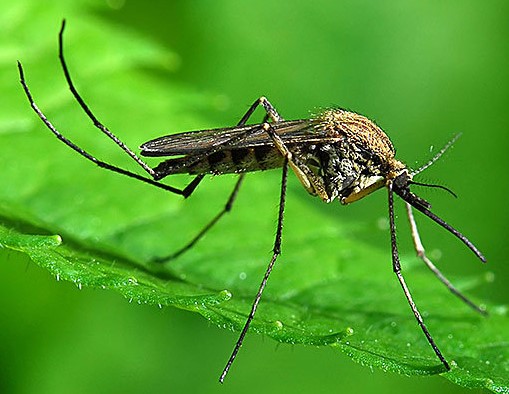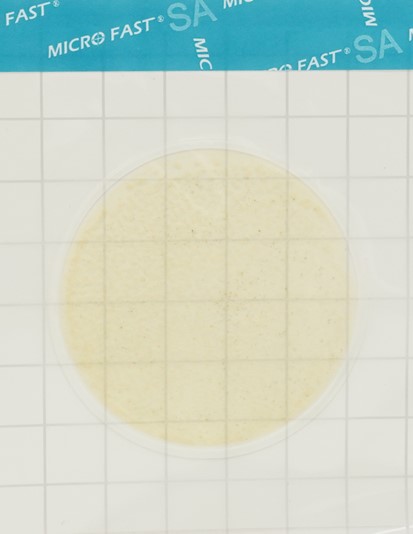Bread ground beetle and measures to combat it

The bread ground beetle (Zabrus tenebrioides Goeze) belongs to the order Coleoptera and is a representative of the largest family of beetles - ground beetles (Carabidae), which includes more than 20,000 species. The word “ground beetle” is common Slavic, formed by a suffix from “zhuzhel” - “insect”, which, in turn, came from “zhuzha”, the same onomatopoeia as “beetle”. In the 19th century they were called halteres.
This is a typical native of the southern steppe zone, adapted to an arid and hot climate. Stable numbers are observed in the North Caucasus, southern Ukraine, Moldova and Transcaucasia. The bread ground beetle can also be found in the middle and southern zone of the European part of RUSSIA, in the south of Western Siberia.
The ground beetle is a pest of cereal crops, damaging wheat, rye, barley, some varieties of oats, sometimes corn, as well as wild cereals (foxtail, wheatgrass, wheatgrass, timothy, bluegrass and others).
— The bread ground beetle grows up to 14–16 mm in length. The beetle is pitch-black with a bronze tint on top and dark brown on the underside. The legs and antennae are reddish-brown. The insect’s HEAD is large, its antennae are short, the elytra of the grain ground beetle are convex and have deep punctate longitudinal grooves (usually nine), says Lyubov Snigireva, chief specialist of the testing laboratory of the Altai branch of the Federal State Budgetary Institution “Grain Quality Assessment Center”.
The appearance of beetles on crops is observed, depending on local conditions, during the flowering period - the filling of winter wheat grains (mid-May - late June). During the day, beetles hide under clods of soil and other shelters; after sunset they become active. At night, beetles damage the awns, scales, ovaries and grain on the ears. The grain is eaten away from the top, leaving the shell intact. A characteristic feature of the damage: the ear becomes “chapped”. Damage to ears is caused by beetles, on average, for 20–25 days, and during this time each beetle can damage up to 50–60 grains; in addition, grains are knocked out of the ear.
The intensive life activity of beetles takes place at an optimal temperature of 20–26 °C. As the temperature rises to 30 °C, activity slows down, and at 36 °C and above, the beetles die. In this regard, the ground beetle has developed an original adaptation to hot climate conditions. With the onset of summer heat and drought, usually from the end of June to August, the beetles take refuge from the heat under stacks, in forest belts, and climb into cracks in the soil to different depths depending on the degree of drying out. The dormant state lasts 20–30 days or more. it depends on temperature and humidity conditions. As precipitation falls and temperatures drop, the beetles become active again. They usually appear on the soil surface in the second half of August - early September.
But the main damage to winter crops is caused by the larvae. 5–28 mm long, they have a dark brown head, creamy body and massive mandibles; appear in September and early October and in the first 6–8 days they eat the shell of their own eggs. The transition to active movement and feeding on plants begins 1–2 weeks after hatching. The larva causes damage in September–October on winter crops. The larvae live in the top layer of soil, in burrows they dig next to food plants. At night they crawl out of their shelters and feed on wheat leaves. To feed during the day, the larvae pull leaves into burrows and chew them there. Having finished with one plant, they move on to another and also make a burrow near it. Damaged plants usually die. The larvae overwinter and can even feed under the snow, but usually come to life when the temperature rises to 9–10 °C. The intensity of damage is related to the age of the larvae and the phase of plant development. At the beginning of tillering, 15 larvae/m² of the 1st instar cause the death of 9% of plants, of the 2nd - 38%, of the 3rd - 85%.
— The mass reproduction of ground beetles is facilitated by both meteorological factors and violations of agricultural practices of grain crops. Heavy rainfall in the summer-autumn period contributes to an increase in the number of the pest. An equally important role is played by the absence or disruption of crop rotation, sowing winter grains using stubble predecessors, and the presence of carrion in the fields, adds specialist Snigireva from the Altai branch of the Federal State Budgetary Institution “Center for Grain Quality Assessment”.
But a critical drop in soil temperature in late autumn and winter causes the death of the larvae. The onset of drought during the emergence of larvae from the egg chamber entails the death of a significant number of them. When soil moisture is low, bread ground beetle eggs do not develop. Their numbers are significantly reduced by parasiticinsects , predators and diseases. Of the parasites, the tachina fly (Viviania cinerea Fall.) is the most common; it lays eggs on young beetles in flight; The larvae develop in the body cavity of the victim. Three species of parasites of the genus Serphus lay eggs in bread ground beetle larvae. In moist soil, the larvae die from a disease caused by the fungi Muscardina and Fusarium. The larvae of blackflies eat ground beetle pupae. In fields adjacent to water bodies, large numbers of beetles are destroyed by seagulls. Agrotechnical measures will allow you
to protect winter crops from ground beetles: compliance with crop rotation, sowing at the optimal time. Timely harvesting of grain with minimal losses worsens the food supply of beetles and pest larvae, which reduces their number. Post-harvest peeling of stubble, loosening of row-row rows and cultivation of pure fallow to a depth of 10–12 cm during the development of pupae cause significant death. When planning sowing using spike predecessors, it is recommended to pre-sow seeds with an insecticide.
When using chemical control methods, it should be taken into account that the ground beetle spends approximately half of its life in the ground, does not feed, and therefore is not exposed to insecticides. Treating seeds before sowing - treating seeds with 12% hexachlorane dust helps in the fight against first-instar larvae. Treating seeds with mercuran gives good practical results. It has been noted that pre-sowing seed treatment increases the effectiveness of subsequent treatments (dusting or spraying) against ground beetles.
If the development of the pest has exceeded the EPV, it is necessary to carry out insecticidal treatment of the fields. Active ingredients of insecticides approved for use against corn ground beetles:
neonicotinoids (systemic action):
- imidacloprid,
- fipronil,
- clothianidin;
- synthetic pyrethroids (contact-intestinal action):
- cypermethrin;
- organophosphorus insecticides (systemic action):
- dimethoate,
- diazinon.
Source: Altai branch of the Federal State Budgetary Institution “Grain Quality Assessment Center”
Read together with it:
- Scientists warn of the risk of a bird flu pandemic more dangerous than COVID-19The world may face a new pandemic caused by bird flu, which in terms of scale and severity of consequences could surpasscovid-19 . This was stated by Marie-Anne Ramey-Welti, DIRECTOR of the Center for Respiratory Infections at the Pasteur Institute in France. This was reported byREUTERS . The highly pathogenic H5 virus has already caused significant damage. it has killed hundreds of millions of bi...
- Belarus presented its products at the Agro Food Drink Tech Expo in Georgia.Photo: belinterexpo.by, November 28, MINSK . Belarus presented an exhibit at the Agro Food Drink Tech Expo in Georgia, the press service of Belinterexpo, the Belarusian Chamber of Commerce and Industry, told BELTA. "Belarusian producers are expanding their EXPORT geography, increasing product deliveries abroad, including developing partnerships in Eastern European countries. Georgia is thus a prom...
- Belarus presented its products at the Agro Food Drink Tech Expo in Georgia.Photo: belinterexpo.by, November 28, MINSK . Belarus presented an exhibit at the Agro Food Drink Tech Expo in Georgia, the press service of Belinterexpo, the Belarusian Chamber of Commerce and Industry, told BELTA. "Belarusian producers are expanding their EXPORT geography, increasing product deliveries abroad, including developing partnerships in Eastern European countries. Georgia is thus a prom...
- Специалисты КСУП "Нива-Барсуки" рассказали, как удалось собрать самый большой в своей истории урожай зерновыхНовости темы Одно из передовых сельхозпредприятий Могилевской области КСУП "Нива-Барсуки" в этом году собрало самый большой в своей истории урожай зерновых. Как итог, в четвертый раз подряд сельхозорганизации вручили почетное переходящее знамя Кировского райисполкома. Кроме того, хозяйство входит в тройку лидеров среди аграриев Могилевщины в номинации "Экономическая эффективность". Пообщались со с...
- Татарстан вошел в топ регионов РФ по производству сельхозпродукции в личных подсобных хозяйствахВ Республике Татарстан остается убрать урожай с 114 тыс. га площадей, при этом основная доля приходится на подсолнечник - 75,5 тыс. га. Кукуруза на зерно обмолочена на площади 28,5 тыс. га, или 56% от плановых площадей. На полях завершается уборка сахарной свеклы. На сахарные заводы вывезено 1 млн тонн сырья, или 4......
- From houses to the "Sand Factory." How the Rachkovichi State Enterprise motivates workers to stay in the village.Belarus's leadership in the global dairy market is ensured by farms focusing on MILK production . This "elite club" includes the state-owned enterprise "Rachkovichi" of the Belarusian Railways in the Slutsk District of the MINSK Region. Its impressive milk yields and field yields are the result of a well-organized livestock industry, careful attention to soil fertility, the use of agricultural tec...






























































